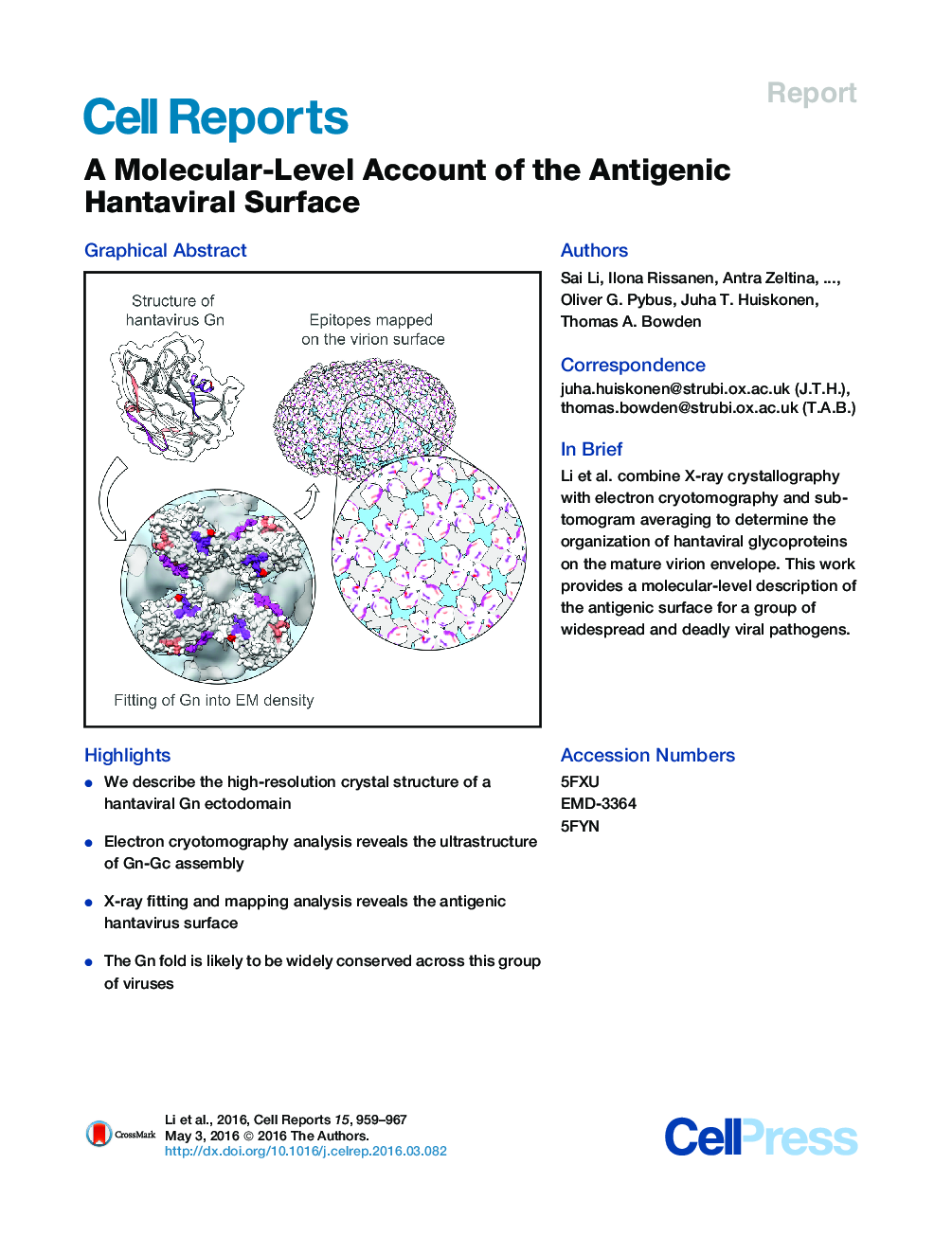| Article ID | Journal | Published Year | Pages | File Type |
|---|---|---|---|---|
| 2039784 | Cell Reports | 2016 | 9 Pages |
•We describe the high-resolution crystal structure of a hantaviral Gn ectodomain•Electron cryotomography analysis reveals the ultrastructure of Gn-Gc assembly•X-ray fitting and mapping analysis reveals the antigenic hantavirus surface•The Gn fold is likely to be widely conserved across this group of viruses
SummaryHantaviruses, a geographically diverse group of zoonotic pathogens, initiate cell infection through the concerted action of Gn and Gc viral surface glycoproteins. Here, we describe the high-resolution crystal structure of the antigenic ectodomain of Gn from Puumala hantavirus (PUUV), a causative agent of hemorrhagic fever with renal syndrome. Fitting of PUUV Gn into an electron cryomicroscopy reconstruction of intact Gn-Gc spike complexes from the closely related but non-pathogenic Tula hantavirus localized Gn tetramers to the membrane-distal surface of the virion. The accuracy of the fitting was corroborated by epitope mapping and genetic analysis of available PUUV sequences. Interestingly, Gn exhibits greater non-synonymous sequence diversity than the less accessible Gc, supporting a role of the host humoral immune response in exerting selective pressure on the virus surface. The fold of PUUV Gn is likely to be widely conserved across hantaviruses.
Graphical AbstractFigure optionsDownload full-size imageDownload as PowerPoint slide
